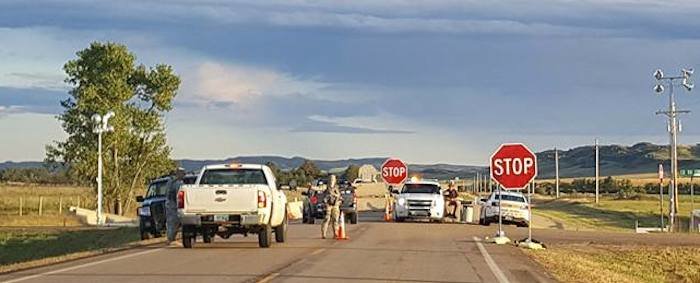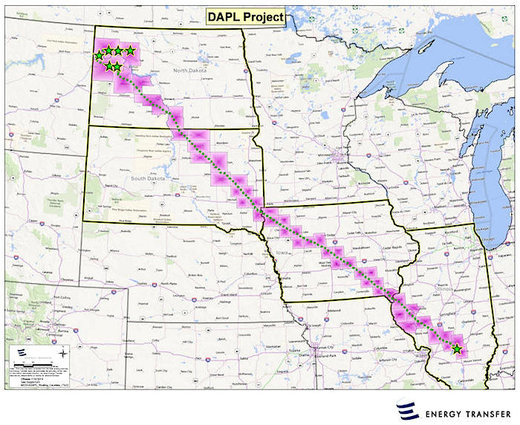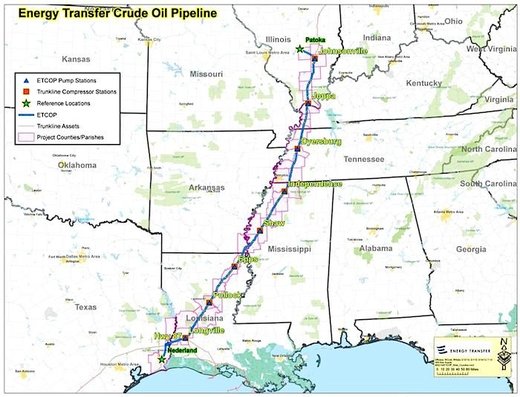During a press conference announcing the activation of the National Guard, Dalrymple stated that a contingent of 24 Guard members will assist law enforcement in providing security at a number of traffic checkpoints approximately 30-miles from the protest site. Maj. Gen. Alan Dohrmann, the head of the Guard, says another 100 Guard members will be on standby if needed to respond to any "incidents."
U.S. District Judge James Boasberg, who also sits on the Foreign Intelligence Surveillance Court (FISA), is expected to rule by Friday on the tribe's request to temporarily halt construction on the Dakota Access pipeline. Earlier this week, Boasberg granted in part and denied in part the tribe's request for a temporary restraining order to stop the project. He said he would decide by Friday whether to grant the larger challenge to the pipeline, which would require the U.S. Army Corps of Engineers to withdraw permits, according to Reuters.
The tribe has been leading a protest for months, with the main protest camps where the pipeline route passes near its reservation near the North Dakota-South Dakota border, swelling to over 4,000 people in recent weeks.
Over the Labor Day weekend, while many people were celebrating and preparing for the upcoming school year, Dakota Access, a subsidiary of Energy Transfer Crude Oil, began bulldozing American Indian burial sites. As protesters attempted to intervene in the desecration of ancestral land, private security guards used attack dogs and pepper spray, injuring dozens of people, including children.
With the cultural items and burial sites having only been identified by experts a few days earlier, in order to stop construction on these sites the State Historic Preservation Office (SHPO) needed to officially survey the area. However, before they were able to undertake a survey, Dakota Access intentionally plowed through the land, destroying unknown numbers of graves and artifacts. Activists on the ground report construction workers moved equipment up to 20 miles away from the area they were previously working in to deliberately bulldoze the site before SHPO had an opportunity to survey it.
In court documents, filed less than 24 hours before crews razed the sacred land, the tribe's former longtime historic preservation officer, Tim Mentz — who finally surveyed the land for the first time recently when a private landowner granted access — specifically pinpointed each area of interest to the Standing Rock Sioux. Mentz and other tribal leaders suggested those documents were used by Energy Transfer Partners' crews to bring malicious and intentional retributive action against the over 100 Native American nations and their supporters occupying the land in an attempt to halt pipeline construction.
"I do not believe the timing of this construction was an accident or coincidence," Mentz wrote in a court filing seeking an emergency temporary restraining order against further construction activity on Sunday. "It appears that DAPL drove the bulldozers approximately 20 miles of uncleared right of way to access the precise area that we surveyed and described in my declaration" to the court.
North Dakota's chief archaeologist plans to inspect the disputed area along the route of the $3.8 billion Dakota Access pipeline where Standing Rock Sioux officials say they've identified cultural artifacts and burial grounds. Paul Picha says that expedition likely won't happen until next week, but that if any artifacts are found — pipeline work would cease. Picha says state officials earlier surveyed the route, but not the disputed site, which is on private land west of State Highway 1806. These factors would explain why the crew attempted to destroy the site prior to the state being able to inspect the area, as it would effectively stop work on that section of the pipeline.
In response to Gov. Dalrymple's announcement regarding the activation of the National Guard, the tribe issued a press release in which it calls for a peaceful response from supporters:
"The pipeline threatens our sacred lands and the health of 17 million people who rely upon the Missouri River for water. There is a lot at stake with the court decision tomorrow. We call upon all water protectors to greet any decision with peace and order. Even if the outcome of the court's ruling is not in our favor, we will continue to explore every lawful option and fight against the construction of the pipeline."In addition, the press release also relayed that Chairman Archambault had spoken to the governor and been assured the National Guard would not enter the camps of Water Protectors on tribal land.
We'll keep you posted as this story develops.
In the video below, you can watch as armed national guard troops detain every vehicle to ask where they are going. This is what the land of the free has become.






Civilized people are very good at removing uncivilized people from their midst. This is the history of our earth. This is the process.
And they (the civilized ones) will use whatever means necessary.
E.g. :
Theft.
Swindle.
Rape.
Torture.
Murder.
Genocide.
Whatever.
I think we need to continue to get more civilized and we should continue to utilize technology and every possible application of it as THE MEANS to this 'civilization'. Otherwise, something really bad might happen....
Have a great day. Drive your car around. Turn on some lights. Run your air conditioner. Mainstream your computer. Chug-a-lug with your iphone. Go shopping.
Have a great day.
ned,
out